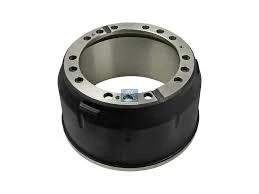
-
 Afrikaans
Afrikaans -
 Albanian
Albanian -
 Amharic
Amharic -
 Arabic
Arabic -
 Armenian
Armenian -
 Azerbaijani
Azerbaijani -
 Basque
Basque -
 Belarusian
Belarusian -
 Bengali
Bengali -
 Bosnian
Bosnian -
 Bulgarian
Bulgarian -
 Catalan
Catalan -
 Cebuano
Cebuano -
 Corsican
Corsican -
 Croatian
Croatian -
 Czech
Czech -
 Danish
Danish -
 Dutch
Dutch -
 English
English -
 Esperanto
Esperanto -
 Estonian
Estonian -
 Finnish
Finnish -
 French
French -
 Frisian
Frisian -
 Galician
Galician -
 Georgian
Georgian -
 German
German -
 Greek
Greek -
 Gujarati
Gujarati -
 Haitian Creole
Haitian Creole -
 hausa
hausa -
 hawaiian
hawaiian -
 Hebrew
Hebrew -
 Hindi
Hindi -
 Miao
Miao -
 Hungarian
Hungarian -
 Icelandic
Icelandic -
 igbo
igbo -
 Indonesian
Indonesian -
 irish
irish -
 Italian
Italian -
 Japanese
Japanese -
 Javanese
Javanese -
 Kannada
Kannada -
 kazakh
kazakh -
 Khmer
Khmer -
 Rwandese
Rwandese -
 Korean
Korean -
 Kurdish
Kurdish -
 Kyrgyz
Kyrgyz -
 Lao
Lao -
 Latin
Latin -
 Latvian
Latvian -
 Lithuanian
Lithuanian -
 Luxembourgish
Luxembourgish -
 Macedonian
Macedonian -
 Malgashi
Malgashi -
 Malay
Malay -
 Malayalam
Malayalam -
 Maltese
Maltese -
 Maori
Maori -
 Marathi
Marathi -
 Mongolian
Mongolian -
 Myanmar
Myanmar -
 Nepali
Nepali -
 Norwegian
Norwegian -
 Norwegian
Norwegian -
 Occitan
Occitan -
 Pashto
Pashto -
 Persian
Persian -
 Polish
Polish -
 Portuguese
Portuguese -
 Punjabi
Punjabi -
 Romanian
Romanian -
 Russian
Russian -
 Samoan
Samoan -
 Scottish Gaelic
Scottish Gaelic -
 Serbian
Serbian -
 Sesotho
Sesotho -
 Shona
Shona -
 Sindhi
Sindhi -
 Sinhala
Sinhala -
 Slovak
Slovak -
 Slovenian
Slovenian -
 Somali
Somali -
 Spanish
Spanish -
 Sundanese
Sundanese -
 Swahili
Swahili -
 Swedish
Swedish -
 Tagalog
Tagalog -
 Tajik
Tajik -
 Tamil
Tamil -
 Tatar
Tatar -
 Telugu
Telugu -
 Thai
Thai -
 Turkish
Turkish -
 Turkmen
Turkmen -
 Ukrainian
Ukrainian -
 Urdu
Urdu -
 Uighur
Uighur -
 Uzbek
Uzbek -
 Vietnamese
Vietnamese -
 Welsh
Welsh -
 Bantu
Bantu -
 Yiddish
Yiddish -
 Yoruba
Yoruba -
 Zulu
Zulu
Exploring the Three Main Varieties of Drum Brake Systems for Vehicles
Understanding the Three Types of Drum Brakes
Drum brakes are a fundamental component of many vehicles' braking systems, known for their reliability and effective stopping power. While disc brakes have gained popularity in recent years, drum brakes continue to be utilized, particularly in certain types of vehicles such as trucks, buses, and older automobiles. Understanding the three primary types of drum brakes can help in recognizing their functions, advantages, and applications.
1. Standard Drum Brakes
Standard drum brakes are the most common type, typically found on the rear wheels of many vehicles. They consist of a hollow cylinder (the drum) that rotates with the wheel, and brake shoes that press against the inner surface of the drum to create friction and slow down the vehicle. The primary advantage of standard drum brakes is their ability to provide strong braking power without significant fading, even under heavy loads. They are also relatively inexpensive to manufacture and maintain.
These brakes perform well in typical driving conditions, offering a good balance between performance and cost. However, they can suffer from heat buildup, which may lead to brake fade during prolonged or extreme use, such as in mountainous terrain or during heavy towing.
Self-adjusting drum brakes feature an automatic mechanism that adjusts the position of the brake shoes as they wear down over time. This ensures consistent performance and optimal contact between the shoes and the drum, maintaining effective braking throughout their lifespan. Self-adjusting systems can be particularly beneficial for drivers who may not regularly check or adjust their braking systems, as they help to minimize maintenance needs.
3 types of drum brakes

The technology used in these brakes typically involves a ratchet mechanism that engages during braking, allowing for fine adjustments without manual intervention. This feature enhances the overall safety and performance of the braking system, making self-adjusting drum brakes an excellent choice for both everyday vehicles and commercial applications.
3. Ventilated Drum Brakes
Ventilated drum brakes are a more advanced variation designed to improve cooling during operation. These brakes incorporate a series of vents or channels within the drum itself, allowing air to circulate and dissipate heat more effectively than standard designs. This feature is particularly advantageous for vehicles that experience high braking loads, such as performance cars or vehicles that carry heavy loads.
By reducing heat buildup, ventilated drum brakes can significantly decrease the risk of brake fade, thus enhancing overall braking performance and safety. Although these systems tend to be more expensive than standard options, the increased efficiency and lifespan often justify the cost for certain applications.
Conclusion
In summary, understanding the three primary types of drum brakes—standard, self-adjusting, and ventilated—can provide insights into their unique benefits and applications. Each type serves a different need, catering to various driving conditions and vehicle requirements. While drum brakes may not be as ubiquitous as their disc counterparts in modern vehicles, their robustness and reliability continue to ensure their presence in the automotive world, proving that they remain a crucial component of many braking systems. As technology evolves, it is likely that drum brake designs will continue to improve, maintaining their relevance in the automotive industry.
-
What Are Drum BrakesNewsJul.07,2025
-
Understanding Brake Drum MaterialNewsJul.07,2025
-
Semi-Trailer Brake Drum: A Key Component for Extreme Loads and Long-Distance TransportNewsJul.07,2025
-
Drum Brake Pads for SaleNewsJul.07,2025
-
Brake Drums for SaleNewsJul.07,2025
-
Brake Drum ManufacturerNewsJul.07,2025
-
Aluminum Brake Drums: The Future of High-Performance CarsNewsJul.07,2025
